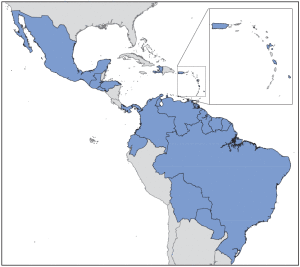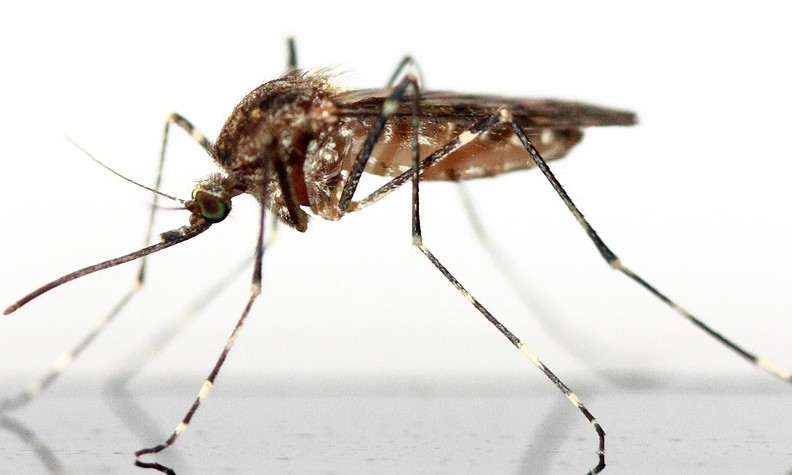If you’ve had the chance to look away from your class notes and at the news over the past few weeks, you’ve undoubtedly heard about the Zika virus. You may have even had family members ask about the virus and if you, as a future health care provider, are concerned about the recent outbreaks. Consider this your SparkNotes for the Zika virus:
What is the Zika virus?
The Zika virus is a species of virus that is spread through the bite of an infected mosquito. It takes anywhere from 2 to 7 days after being bitten by an infected mosquito for symptoms to manifest. Symptoms of Zika virus infection include a mild fever, skin rash and conjunctivitis (red eyes). Normally, these symptoms last 2 to 7 days and are self-limiting — they go away without requiring treatment. However, there has been an increasing number of reported cases of microcephaly (unusually small heads) in babies born to mothers in infected regions as well as the number of cases of Guillain-Barré syndrome. There is currently no cure for Zika virus and the only way to prevent infection is to prevent the mosquito bite.1, 2, 3
Where is the Zika virus now?
Although relatively unknown to the general population until its most recent outbreak originating in Brazil, the Zika virus is not new to the world. It owes its name to the Ugandan forest where it was first isolated from a rhesus monkey in 1947.1, 4 Today, the distribution of the Zika virus is found throughout much of Africa, Southeast Asia, the Pacific Islands, as well as many Caribbean islands and Central and South America, as depicted in the graphic below taken from the CDC.

Image credit: CDC.6
Is it contagious? How does it spread?
The World Health Organization (WHO) has reported that the Zika virus “has been isolated in semen” and the Center for Disease Control (CDC) has reported cases of transmission of the Zika virus via blood and sexual contact.5, 7 However, by far the most common cause of infection is through the bite of an infected mosquito. To date, the only cases of Zika virus infection in the United States have been in individuals who traveled to endemic areas or who have had intimate contact with someone who was infected.
Can Zika virus spread to the continental United States?
The Aedes species mosquito is the Zika virus’s primary vector. The distribution of the mosquito is quite prevalent in the South United States as well as much of the east coast. This is the same mosquito that carries Dengue fever and Chikungunya. Both of these disease have occurred in the US but are quite rare.8, 9 So it is possible for Zika virus to spread to the continental United States, but unlikely to occur.

Image credit: CDC.9
What is the connection between Zika virus and microcephaly?
Microcephaly is a rare neurological condition where a child’s head is significantly smaller than heads of other children of the same age and sex.10 It can results in a continuum of symptoms ranging from mild developmental delays to severe motor and intellectual deficits, like cerebral palsy.11 There are many causes of microcephaly including congenital infections caused by a number of bacteria and viruses. This correlation between the outbreak of Zika virus and the sharp increase in the rate of microcephaly in affected areas point to a causal relationship that congenital infection, or mothers who are infected when pregnant, may cause microcephaly in their infants. Thus, pregnant women or women who are planning on becoming pregnant are advised not to travel to endemic areas.
What is Guillain-Barré Syndrome and why is it associated with the Zika virus?
Guillain-Barré Syndrome (GBS) is an autoimmune reaction that attacks the peripheral nervous system. Your immune system produces antibodies against specific cellular markers found on the exterior of invading bacteria and viruses. Sometimes these cellular markers closely resemble or may mimic similar markers found in your peripheral nervous system. So instead of attacking the invading pathogens your body attacks itself. The Zika virus may be yet another cause of GBS. Symptoms of GBS include weakness or a tingling sensation in the legs that may spread to the upper limbs and upper body.12 These symptoms may worsen are can potentially spread to the diaphragm. Up to 30 percent of people with GBS require temporary help breathing via a ventilator.13
What is currently being done to combat Zika virus?
The World Health Organization Director-General declared that the epidemic “constitutes a public health emergency of international concern.” Currently, there is no ‘”justification for restrictions on travel or trade to prevent the spread of Zika virus” and “the most important protective measures are the control of mosquito populations and the prevention of mosquito bites in at-risk individuals, especially pregnant women.”14 As such, scientists are working on a new method of decreasing the population of mosquitoes through a sterilization technique that utilizes nuclear radiation. However, even releasing a huge number of sterile males into the wild would take a few months to reduce the population.15
In conjunction with the sterilization techniques, Sanofi, a French multinational pharmaceutical company, said that its vaccine division would “use its expertise in developing vaccines for similar viruses such as yellow fever, Japanese encephalitis and, most recently, dengue’” to combat Zika.16 In the meantime, both the CDC and WHO advise that the best way to prevent infection with Zika virus is to prevent mosquito bites. Although there is no way to prevent all mosquito bites, insect repellent sprays that contain DEET have been proven to be the most effective.17
For more information, please review the following online resources:
- Center for Disease Control and Prevention- Zika Virus
- World Health Organization- Zika Virus
- CDC- Help Control Mosquitoes That Spread Dengue
Image credit: Mosquito by buchse12 licensed under CC0 1.0



